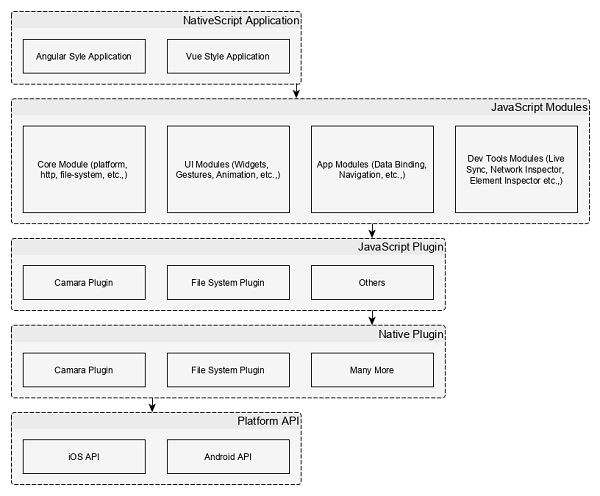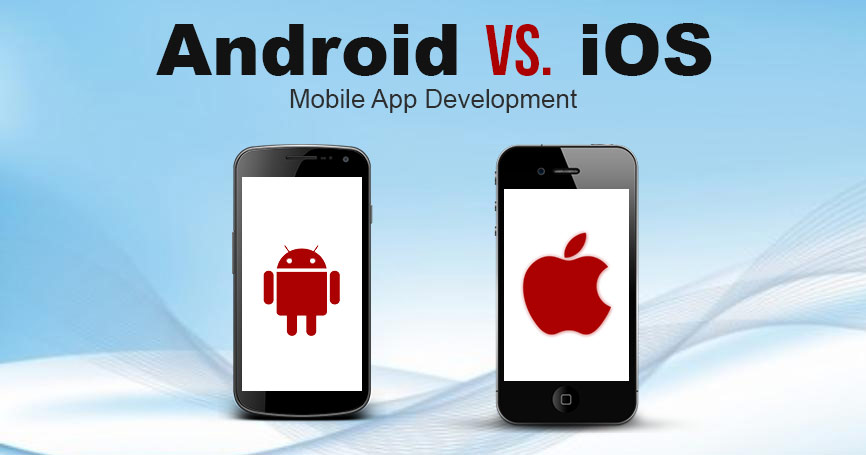The Cross-Platform Conundrum: A New Era for Native App Development
In the bustling world of mobile app development, the promise of “write once, run anywhere” has been a siren song for decades. The challenge, however, has always been the trade-off between development efficiency and native user experience. While web-view-based solutions like those in the Ionic News and Capacitor News cycles offer rapid development, they often fall short of the fluid performance and deep platform integration that users expect. This is where NativeScript carves out its unique and powerful niche. As a mature, open-source framework, NativeScript empowers developers to build truly native applications for iOS and Android from a single JavaScript or TypeScript codebase, without a web view in sight.
Recent shifts in its governance have placed NativeScript on a firm, community-driven foundation, ensuring its longevity and fostering a vibrant ecosystem. This renewed energy makes it a compelling choice for teams leveraging popular frameworks. Whether you’re deep in the world of Angular News or following the latest Vue.js News, NativeScript meets you where you are. It’s not just about sharing code; it’s about delivering uncompromised performance and a pixel-perfect native UI, positioning it as a formidable player in a landscape that includes giants like React Native and Flutter. This article dives deep into the architecture, practical implementation, and advanced techniques that make NativeScript a top-tier choice for modern mobile development.
Section 1: The Core of NativeScript: What “Truly Native” Really Means
The term “native” is often used loosely in cross-platform development. For NativeScript, it’s a core architectural principle. Unlike frameworks that render web content inside a native shell, NativeScript translates your JavaScript/TypeScript code into native UI components. When you write <Button> in your markup, you get a real android.widget.Button on Android and a UIButton on iOS. This fundamental difference is the key to its high-performance, no-compromise user experience.
Unfettered Access to Native APIs
NativeScript’s most significant advantage is its direct, unimpeded access to 100% of the underlying native platform APIs from JavaScript. There is no need to write custom bridges or wait for a plugin to expose a new OS feature. If it exists in the native SDK, you can call it. This is made possible by a sophisticated runtime that introspects the native platform’s APIs and makes them available in the JavaScript context. Combined with TypeScript, this becomes incredibly powerful, as the tns-platform-declarations package provides type definitions for the entire iOS and Android SDKs.
Let’s see a practical example. Here’s how you can display a native Android “Toast” message directly from TypeScript:
import { Application, isAndroid } from "@nativescript/core";
export function showNativeToast(message: string) {
// Ensure this code only runs on Android
if (isAndroid) {
// Access the native Android application context
const context = Application.android.context;
// Call the native android.widget.Toast.makeText() method
const toast = android.widget.Toast.makeText(context, message, android.widget.Toast.LENGTH_LONG);
// Show the toast
toast.show();
}
}
// Usage:
showNativeToast("Hello from Native Android!");In this snippet, android.widget.Toast is not a JavaScript abstraction; it is a direct proxy to the native Java class. This capability is revolutionary, allowing developers to integrate with platform-specific features, third-party native SDKs, and the very latest OS updates the day they are released. This is a level of integration that keeps pace with the latest Node.js News and TypeScript News, ensuring your tooling is always modern.
Section 2: Modern Development with Your Favorite Frameworks
While NativeScript Core (using plain JavaScript or TypeScript) is powerful, the framework truly shines when integrated with the ecosystems developers already know and love. It offers first-class support for Angular and Vue.js, allowing teams to leverage existing skills and tooling for mobile development.
NativeScript with Angular

The integration with Angular is deep and seamless. Developers can use the Angular CLI, components, dependency injection, routing, and services just as they would for a web application. The key difference lies in the template, where you use NativeScript UI components instead of HTML elements. This synergy means the vast amount of knowledge from the Angular News community is directly applicable.
Here’s a simple Angular component that displays a counter with a button to increment it:
import { Component } from "@angular/core";
@Component({
selector: "ns-counter",
template: `
<GridLayout rows="auto, auto" columns="*" class="p-4">
<Label
row="0"
[text]="'Taps: ' + counter"
class="text-2xl text-center">
</Label>
<Button
row="1"
text="Tap Me!"
(tap)="onTap()"
class="btn btn-primary btn-active">
</Button>
</GridLayout>
`
})
export class CounterComponent {
public counter: number = 0;
public onTap() {
this.counter++;
console.log(`Counter is now ${this.counter}`);
}
}Notice the use of NativeScript UI elements like <GridLayout> and <Label>, along with familiar Angular syntax like property binding [text] and event binding (tap). The build process, often powered by tools discussed in Webpack News or Vite News, handles the compilation into a native app.
NativeScript with Vue.js
The Vue.js community is equally well-supported. Following the latest Vue.js News, NativeScript offers robust integration with Vue 3. Developers can use single-file components (.vue files) with <template>, <script>, and <style> blocks. The experience is remarkably similar to building a web app with Vue, making the transition to mobile incredibly smooth. This approach is also relevant to those following Svelte News or SolidJS News, as it showcases how modern frameworks can be adapted for native UI.
Here is the same counter component, this time implemented with Vue.js:
<template>
<Page>
<ActionBar title="Vue Counter" />
<GridLayout rows="auto, auto" columns="*">
<Label
row="0"
:text="`Taps: ${counter}`"
class="text-2xl text-center p-4"
/>
<Button
row="1"
@tap="onTap"
text="Tap Me!"
class="m-4"
/>
</GridLayout>
</Page>
</template>
<script>
import { ref } from 'vue';
export default {
setup() {
const counter = ref(0);
const onTap = () => {
counter.value++;
console.log(`Counter is now ${counter.value}`);
};
return {
counter,
onTap,
};
},
};
</script>The syntax is idiomatic Vue, using the Composition API with ref and setup(). This allows developers to leverage the entire Vue ecosystem, from state management libraries to utility functions, while rendering a truly native interface.
Section 3: Advanced Capabilities and Ecosystem Integration
Beyond the basics, NativeScript offers powerful features for building complex, enterprise-grade applications. One of the most compelling is the ability to share code between your web and mobile projects, creating a truly unified development experience.
Strategies for Code Sharing
Modern development workflows, often discussed in circles following Next.js News or Remix News, heavily favor monorepos for managing complex projects. Tools like Nx are excellent for structuring a NativeScript project to share code with a web counterpart (built with Angular, React, Vue, etc.). The typical strategy is to isolate business logic, services, and data models into a shared library, while keeping the UI-specific code separate for each platform.
A common monorepo structure might look like this:

my-awesome-app/
├── apps/
│ ├── mobile/ # NativeScript app (iOS/Android)
│ │ ├── src/
│ │ │ ├── components/
│ │ │ │ └── login.component.ts (uses <TextField>, <Button>)
│ │ └── nativescript.config.ts
│ └── web/ # Angular/Vue/React web app
│ ├── src/
│ │ ├── app/
│ │ │ └── login/
│ │ │ └── login.component.ts (uses <input>, <button>)
│ └── angular.json
├── libs/
│ └── core/ # Shared business logic
│ └── src/
│ ├── services/
│ │ └── auth.service.ts # Shared authentication logic
│ └── models/
│ └── user.model.ts # Shared data model
└── nx.jsonIn this structure, both the mobile and web apps import the AuthService from the shared core library. The service contains the logic for API calls, state management, and validation, which is identical across platforms. Only the UI components that render the login form are platform-specific. This approach dramatically reduces code duplication and streamlines feature development.
Leveraging the Native Plugin Ecosystem
For common device features, the NativeScript plugin ecosystem is rich and mature. The NativeScript Marketplace hosts hundreds of community-contributed and officially supported plugins for everything from accessing the camera and GPS to Bluetooth, machine learning (ML Kit), and augmented reality (AR). These plugins abstract away the platform-specific native code, providing a simple JavaScript/TypeScript API.
For example, using the camera is as simple as installing the plugin and calling a function:
import { requestPermissions, takePicture } from '@nativescript/camera';
import { ImageAsset } from '@nativescript/core';
export async function captureImage(): Promise<ImageAsset | null> {
try {
// First, request camera permissions
await requestPermissions();
// Take a picture with specific options
const imageAsset = await takePicture({
width: 800,
height: 600,
keepAspectRatio: true,
saveToGallery: true
});
console.log("Image captured successfully!");
return imageAsset;
} catch (error) {
console.error("Error capturing image:", error);
return null;
}
}This code handles permissions and the camera intent on both iOS and Android, returning a consistent ImageAsset object. This plugin-based architecture is essential for rapid development and is complemented by modern testing tools, with trends in Jest News and Cypress News influencing how developers ensure quality in their cross-platform apps.
Section 4: Best Practices and Performance Optimization
Building high-performance NativeScript apps involves understanding both the framework’s nuances and the underlying native platforms. Following best practices can lead to applications that are indistinguishable from those built with Swift or Kotlin.
Efficient UI and Layouts
- Use Virtualized Lists: For long, scrolling lists of data, always use
ListViewor the more powerfulCollectionView. These components virtualize their views, meaning they only render the items currently visible on screen, ensuring smooth scrolling and low memory usage. Avoid using aRepeaterinside aScrollViewfor large datasets. - Master Layout Containers: NativeScript provides several layout containers like
StackLayout,GridLayout, andFlexboxLayout. Understanding how they measure and arrange child elements is crucial.GridLayoutis often the most performant for complex UIs, as it requires a single measurement pass, whereas nestedStackLayouts can cause performance bottlenecks. - Avoid Over-Nesting: A deep UI hierarchy can slow down rendering. Aim for a flatter view structure whenever possible to optimize layout performance.
Development Workflow and Tooling
A smooth development experience is key to productivity. NativeScript’s CLI offers Hot Module Replacement (HMR), which injects code changes into your running app without a full restart, preserving your application’s state. This provides a near-instant feedback loop. Furthermore, modern build tools and practices from the wider JavaScript ecosystem, such as those covered in ESLint News and Prettier News, are fully integrated to maintain code quality. The build process uses Webpack under the hood, enabling optimizations like tree-shaking and Ahead-of-Time (AOT) compilation, which significantly improve startup time and overall performance.
Common Pitfalls to Avoid
- Thinking in Web Terms: Newcomers often try to apply web-based CSS concepts like
floator look for a DOM. It’s vital to embrace the native UI paradigm. Styling in NativeScript is a subset of CSS but applies to native elements, so not all properties are available. - Ignoring Platform Differences: While 95% of your code can be shared, you should embrace platform-specific UI/UX conventions. Use conditional checks (
isIOS/isAndroid) or platform-specific files (e.g.,my-component.ios.css) to fine-tune the user experience.
Conclusion: NativeScript’s Place in the Future of App Development
NativeScript has firmly established itself as a mature, powerful, and forward-looking framework for cross-platform native development. Its unique architecture, which provides direct access to native APIs without a web view, offers unparalleled performance and flexibility. The strong support for both Angular and Vue.js allows development teams to leverage their existing skills to build world-class mobile applications, while its community-driven, open-source governance under a major foundation ensures a stable and innovative future.
For developers and organizations looking to build high-quality mobile apps without the overhead of maintaining separate iOS and Android codebases, NativeScript presents a compelling solution. It successfully bridges the gap between development efficiency and a truly native user experience. As the JavaScript ecosystem continues to evolve, with constant updates in Deno News and Bun News, NativeScript is well-positioned to remain a relevant and powerful tool for years to come. The next step is to explore the official documentation, experiment with the NativeScript Playground, and discover how it can accelerate your mobile development journey.

